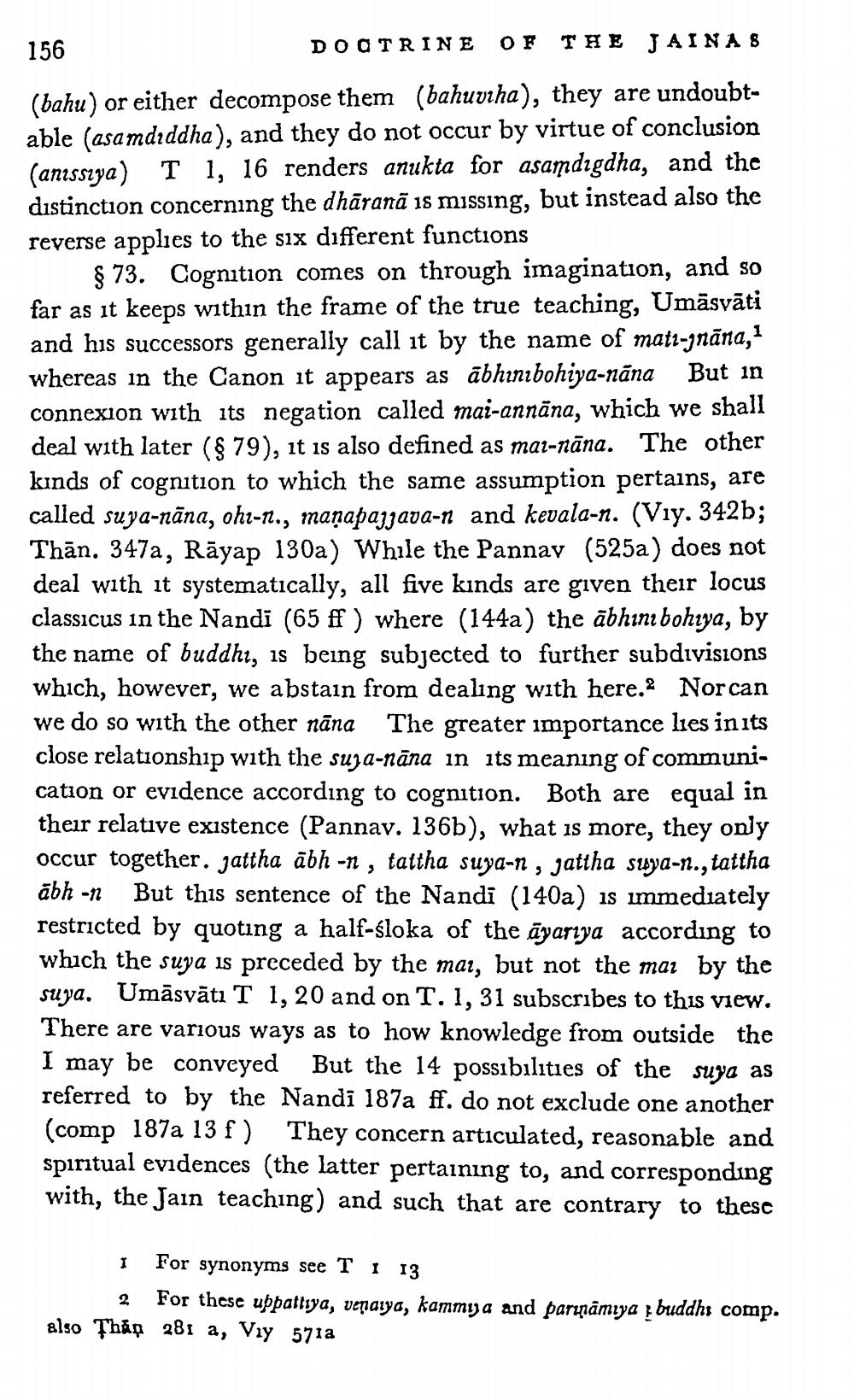________________
156
DOCTRINE OF THE JAINAS (bahu) or either decompose them (bahuviha), they are undoubtable (asamdıddha), and they do not occur by virtue of conclusion (anissiya) T 1, 16 renders anukta for asamdigdha, and the distinction concerning the dhāranā is missing, but instead also the reverse applies to the six different functions
$ 73. Cognition comes on through imagination, and so far as it keeps within the frame of the true teaching, Umāsvāti and his successors generally call it by the name of matz-nāna, whereas in the Canon it appears as ābhınıbohiya-nāna But in connexion with its negation called mai-annāna, which we shall deal with later (879), it is also defined as mar-nāna. The other kinds of cognition to which the same assumption pertains, are called suya-nāna, oh1-1., manapajjava-n and kevala-n. (Viy. 342b; Thān. 347a, Rāyap 130a) While the Pannay (525a) does not deal with it systematically, all five kınds are given their locus classicus in the Nandi (65 ff) where (144a) the ābhını bohiya, by the name of buddhi, is being subjected to further subdivisions which, however, we abstain from dealing with here.2 Norcan we do so with the other nāna The greater importance lies in its close relationship with the suja-nāna in its meaning of communication or evidence according to cognition. Both are equal in their relative existence (Pannav. 136b), what is more, they only occur together. jattha ābh -1 , tattha suya-n , jattha suya-1., tattha ābh - But this sentence of the Nandi (140a) is immediately restricted by quoting a half-śloka of the āyarıya according to which the suya is preceded by the mai, but not the maz by the suya. Umāsvāti T 1,20 and on T. 1,31 subscribes to this view. There are various ways as to how knowledge from outside the I may be conveyed But the 14 possibilities of the suya as referred to by the Nandi 187a ff. do not exclude one another (comp 187a 13 f) They concern articulated, reasonable and spiritual evidences (the latter pertaining to, and corresponding with, the Jain teaching) and such that are contrary to these
I For synonyms see T 1 13
2 For these uppatlıya, venaiya, kammiya and parınāmiya ļ buddhi comp. also Thân 281 a, Viy 5712




